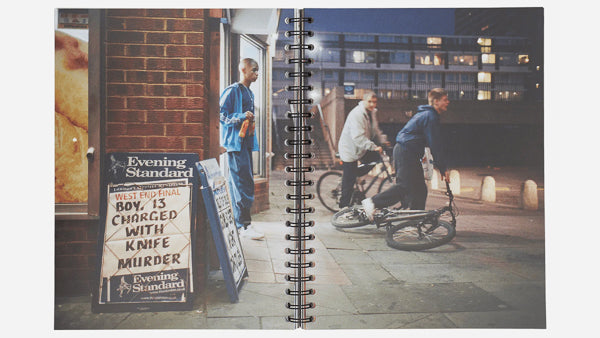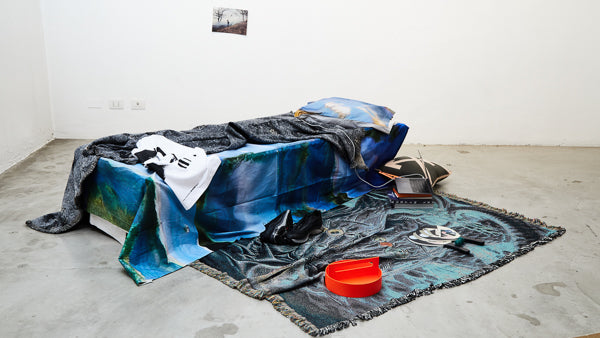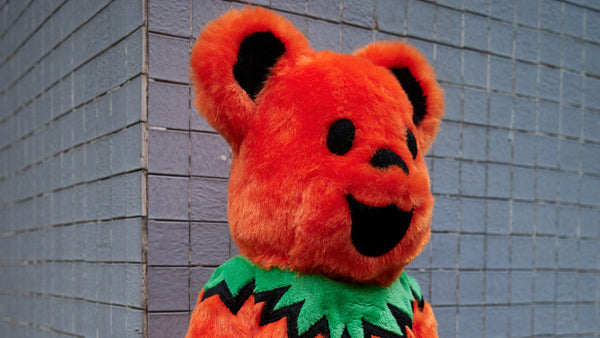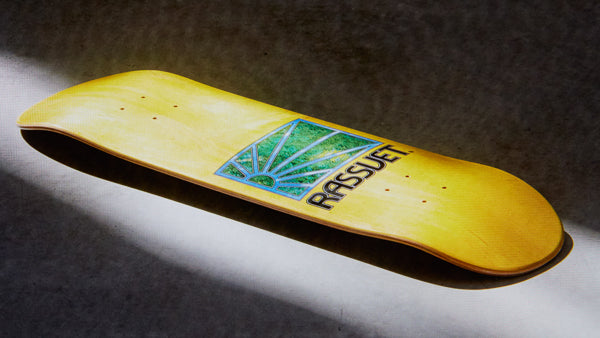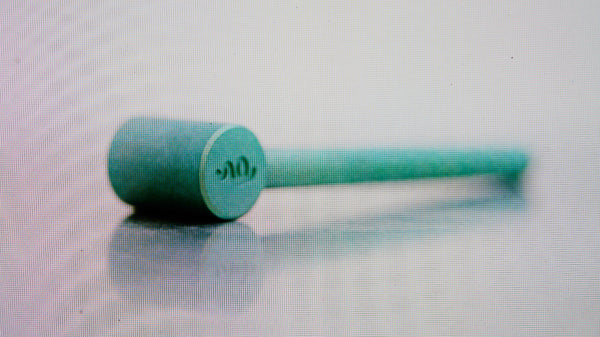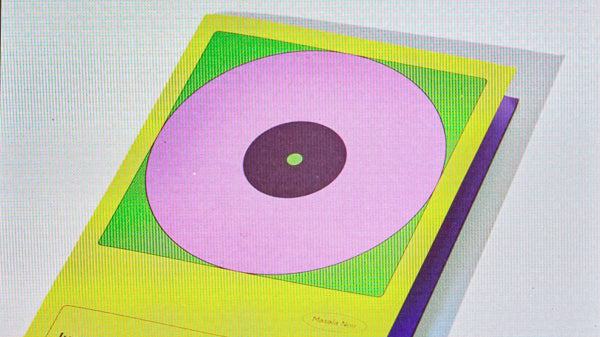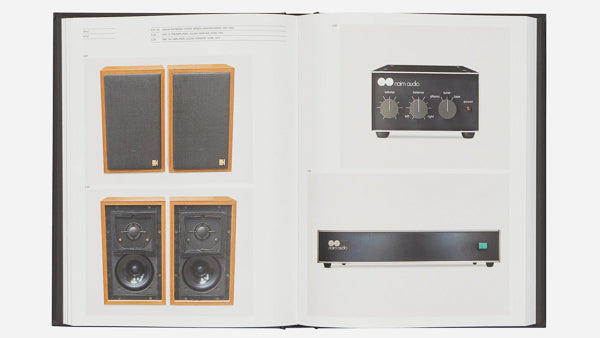CULTURE 03.05.17
OAMC AND THE ART OF DISRUPTION
OAMC is seen by some as the evolution of luxury streetwear with an increasingly large following in its footsteps. Behind the label’s sweeping success is a savvy combination of several important factors. And despite its relatively recent start, this is what allows OAMC to stand alone in a competitive menswear landscape.
These elements are about unparalleled craftsmanship, premium materials, and an utmost attention to detail from design to production. All this has indeed had a key role in building up OAMC’s reputation. When digging deeper though, it’s easy to see why the brand has gained a tremendous cult following in such a short period of time.
Designer Luke Meier and his partner Arnaud Faeh both come from shared backgrounds in streetwear, having cut their teeth in Supreme and Carhartt WIP respectively. As insiders within the fashion world, it was crucial to release products they could connect with. And that’s what urged them to create a clothing brand to offer a new perspective on fashion. It’s a brand that looks away from easy shortcuts and one that is focused on the authenticity of the past, when it was less defined and more fluid.
We had the chance to shed a light on all the things OAMC with the brand's creative mind Luke Meier. He shared with us his own vision of streetwear and fashion, how he feels about getting labeled, and OAMC's disruptive approach.
SJ: Tell us more about OAMC conception. How did everything start off?
LM: Arnaud and I met in New York a long time ago through mutual friends. When I left Supreme, I kept doing freelance stuff, but I started traveling and I was in Europe a lot more, so we connected again. And started talking about this project.
I’d always been fascinated by the level that you can make things out over here. Being in New York, you always look to Italy, Japan, where amazing stuff is made, and there’s a real deep industry. I felt a sort of curiosity as the brands that are made over here didn’t speak to me, they didn’t relate to me. All those brands like Supreme and Stussy, they were guys that were tasteful and clever and that were making stuff that was about what they were into. The big luxury brands in Europe weren’t that to me, they were like beautiful products but there was no essence. So, we started thinking, what would happen if we made something on that level but while bringing in this point of view? That was the catalyst to start all this. It’s not just about making high-level products, those were already there. The idea was making high-level things from our perspective, with the references we grew up with, which could speak to people like us.
At the beginning, it took us a while to get here because we had no doors open. We didn’t know where to go to make anything. This is a very secretive industry as far as where you get things done, but once you’re in, you realize that’s a word-of-mouth business... Which is cool as it’s like a natural barrier for anybody to come in and start making something. It’s interesting because it’s very relationship based. People at the very highest level, don’t want any other business and don’t want you in there. We’ve been fortunate to get access to some of those things through the relationship we’ve built over the last couple of years.
SJ: Streetwear and fashion seem to be the most abused words these days. What’s going on?
LM: People get obsessive about labeling things, putting them into a box. What’s funny to me, being in Europe a lot, is that this streetwear fashion isn’t anything new. It’s been happening since forever. The industry is now trying to put these definitions in these boxes, and a lot of people just want to use these buzzwords to show they’re on trend. I think it’s the incorrect way to approach it.
To me fashion, and design in general, is a sort of reflection of what’s in the air, what people think is relevant or interesting. The idea, the music, the culture come first and fashion follows that, as it is a way to express ideas. It is how you dress and how you present yourself that express your ideas.
The word streetwear is very loaded right now. Being around streetwear brands for a long time, the goal wasn’t trying to get labeled. It was trying to make cool shit from cultured and eclectic ideas, it was that simple. Take a guy like Shawn Stussy. He liked Chanel, London club culture, and music, but he loved surfing too. What he created wasn’t about a lifestyle, it was very natural as it reflected who he was. There were no rules then, so it’s weird that somehow these rules were established and that now everybody is trying to break them down.
SJ: What has changed since then?
LM: The industry asks for rules to deal with products, organize stores and so on. Before it was all about what was around, cool, and interesting. It was much more open.
It’s funny how people freak out when they go to Japan for their first time and they’re like “Oh wow, I would never imagine a guy wearing that suit together with Converse Chuck Taylors. To me, that’s normal, it’s just good shit. And what we’re trying to do with OAMC is fighting against all that stuff. In Italy, you have a very heavy historical context of what you’re supposed to wear, and when and where you should wear it. You can’t wear a suit along with a t-shirt that looks like it’s from a hip-hop brand. But why not?
SJ: How do you feel when OAMC gets associated with a label or another?
LM: I used to care more. Now it feels like trying to explain something to somebody who doesn’t even get it at first. And that’s maybe the same spirit that occurred at the beginning of Supreme and Stussy. We just do our thing and the people who get it, they get it, and those that don’t, who cares. Not to be in any way disrespectful to anybody, when you talk about these labels, words like streetwear, luxury, and fashion are totally abused. But I believe that the people who are obsessed over those things are those who don’t understand in a lot of ways.
SJ: Function and aesthetic. What comes first at OAMC?
LM: II guess they should be completely balanced. There’s something nice about function because it works, it usually lasts longer. But let’s say aesthetic comes first, at least that’s what draws me to something first. I think what people don’t understand of what we’re doing is that we’re not about function being technical, there’s a big difference. Functional to me is design with a purpose in mind from the beginning, it’s less about decorations. I want people to understand that OAMC is not functional where everything is waterproof. It’s not that at all, that’s technical. Maybe there are elements or design cues that come from that, but it’s more like creating something for us to wear on an everyday level.
SJ: How’s your creative process when starting a new collection?
LM: It’s kind of messy. At the beginning it’s a broad concept, it’s about “what’s something that’s interesting?” Then we focus on the different levels that we can go a little bit deeper into things, and we slowly start doing things a little more precise. OAMC is a brand that has a very specific approach, just think of the fabrics we like, the silhouettes, the shapes. The brand is one thing, but when you talk about the seasons, it’s always necessary to focus at least on a point of reference for all the different design works. And it can be something straightforward like the idea of flight from Fall 16, or it can be abstract like the isolation concept from Spring 17. It’s about giving a context to our apparel. And once we’ve figured this out, it becomes more practical, less conceptual. It’s about finding the techniques that apply well, thinking about the different pieces, and the fabric research.
SJ: What do you think about collabs? Have you ever thought about partnering with someone else?
LM: My perspective comes from the early steps when I was working in Supreme. The point of doing collaborations is to create something that you couldn’t do otherwise on your own. That should be the same for both sides. When you talk about Nike and Undercover together, for example, that works well to me as the result is something they couldn’t do separately. Collaborations are lame when they are just about coloring, labeling, or branding. That sucks, because there’s no point for those products to exist. It’s commercial, a quick money grab, but it’s not real, it doesn’t resonate.
What’s interesting is when you have a deep, proper partnership and you make something new. We’re totally open to collaborations and we want to work with other people as we also realized there are sort of realistic things we can’t do, because of our experience. We’ve been talking to a lot of people and considering different projects, but it has to work in a way where you arrive at the point that it matters. It’s not just about branding, cause that sucks. There should be a point, there’s too much stuff out there already. We don’t need more useless collaborations.
SJ: How can brands manage to stand out within this noise?
LM: It’s super hard and, unfortunately, the things that dominate now are shallow and pointless hype garbage. We believe that we’re doing something that’s relevant and that matters. So, the reality is, no matter how hyped your stuff is, it’ll disappear from the first pages of blogs in like 20 minutes. Most of the time, a lot of the things you see online, that’s all it is. If you go and see the piece, it’s crap, really poor quality, a super high price, and poor fabrics but super hyped. It’s empty. But when you ask how we try to stand out, we have something real behind it and it’s something unique.
SJ: Biggest challenges across these years with OAMC?
LM: The most difficult part is to get all the people that are making everything to realize the piece in the right way. That’s the biggest challenge, more than everything else. Whatever we can control here, that’s on us, so it’s not that difficult. Of course, sometimes you are more creative or less creative, but we can control a beautiful sketch, or select a nice fabric or make cool graphics. That’s the easy part, in a way. The hard part is to get it created in the right way. And the reality is that it’s not an art project, so we must be creative thinking about the finance side also. You should be conscious of values. We don’t cut any corners, our materials are good, produced in respectable factories with a high-level work. The challenge is to get people to do it in the right way, especially when you’re trying to do something slightly different because it’s like you’re trying to break habits. And for us this is something very simple, it’s our mindset. But a maker who’s been using only a specific kind of fabric or finishing all the time, he might feel lost.
SJ: Is accepting compromises part of the game?
LM: We don’t compromise at all, actually. And this goes back to your very first question, as it refers to authenticity. Because if you can’t do it authentically, then you’re wack. Our customers are quite clever about this, they can see and feel what’s authentic. Because if you’re trying to do something just because it's trendy, that’s obviously inauthentic. High fashion should leave skateboarding alone. Don’t do skateboarding! (laughs) Or when you see sort of inauthentic and almost disrespectful appropriation, that doesn’t feel right and I think people can tell too.
This interview has been edited for clarity and length.























